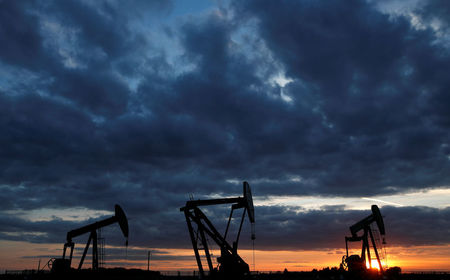Commodities
Wildfire evacuation notice issued for oil sands rich Alberta town

TORONTO (Reuters) -An evacuation alert has been issued for Fort McMurray, Alberta, as an out-of-control fire rages southwest of the major Canadian oil town, making it among the first actions ahead of the wildfire season.
In a notice late on Friday, the Alberta government said the wildfire danger is “extreme” in the Fort McMurray Forest Area and out of control at 1,000 hectares (2,471 acres) in size.
It said strong winds are expected on Saturday, as a cold front continues to pass over the region. Helicopter pilots using night vision equipment surveilled the wildfire area overnight.
In 2016, a huge wildfire in Fort McMurray forced the evacuation of 90,000 residents and shut in more than a million barrels per day of oil output.
Residents in Saprea Creek Estates are also placed on alert from the municipality of Wood Buffalo. In British Columbia, the Northern Rockies Regional Municipality issued an evacuation order for the town of Fort Nelson.
The federal government has warned Canada faces another “catastrophic” wildfire season as it forecasted higher-than-normal spring and summer temperatures across much of the country, boosted by El Nino weather conditions.
Meeting with fire chiefs in West Kelowna, one of several B.C. communities that were forced to evacuate thousands of people last summer, Prime Minister Justin Trudeau said on Friday that it was likely to be “a very bad forest fire season.”
“People are worried about what the summer might bring. People are worried what the future might hold,” he said.
remove ads
.
Last year Canada endured its worst-ever fire season, with more than 6,600 blazes burning 15 million hectares, an area roughly seven times the annual average. Eight firefighters died and 230,000 people were evacuated from their homes.
Commodities
Oil prices rise; U.S. crude inventories plunge, Russia-Ukraine truce eyed
Commodities
India’s Reliance to stop buying Venezuelan oil over US tariffs, sources say
Commodities
Oil prices climb on Venezuela supply worries

 Forex3 years ago
Forex3 years agoForex Today: the dollar is gaining strength amid gloomy sentiment at the start of the Fed’s week

 Forex3 years ago
Forex3 years agoUnbiased review of Pocket Option broker

 Forex3 years ago
Forex3 years agoDollar to pound sterling exchange rate today: Pound plummeted to its lowest since 1985

 Forex3 years ago
Forex3 years agoHow is the Australian dollar doing today?

 Cryptocurrency3 years ago
Cryptocurrency3 years agoWhat happened in the crypto market – current events today

 World3 years ago
World3 years agoWhy are modern video games an art form?

 Commodities3 years ago
Commodities3 years agoCopper continues to fall in price on expectations of lower demand in China

 Economy3 years ago
Economy3 years agoCrude oil tankers double in price due to EU anti-Russian sanctions























